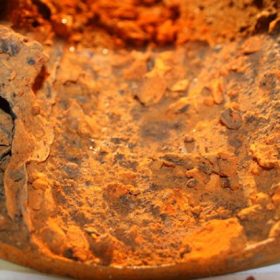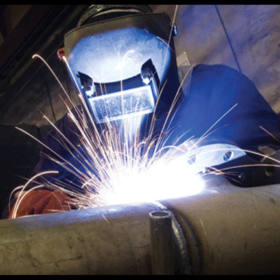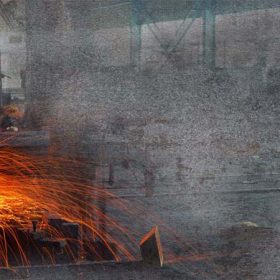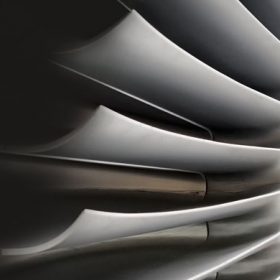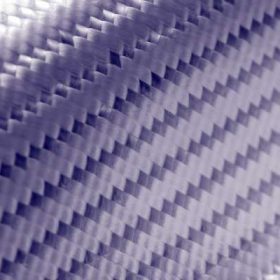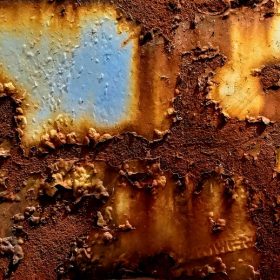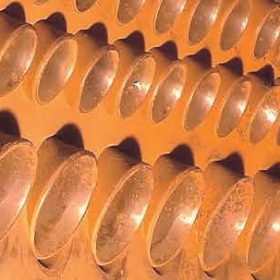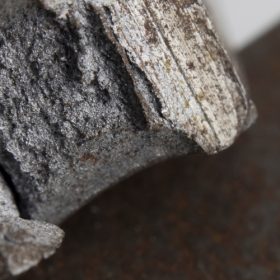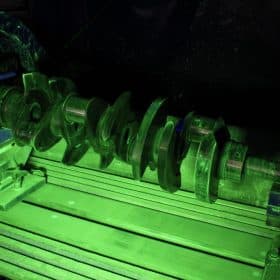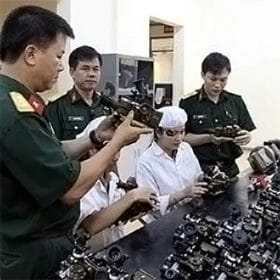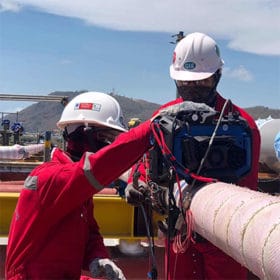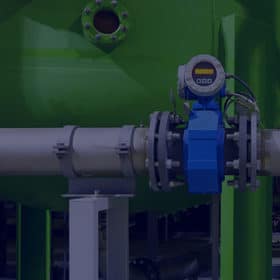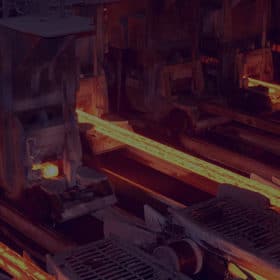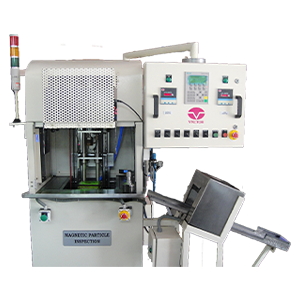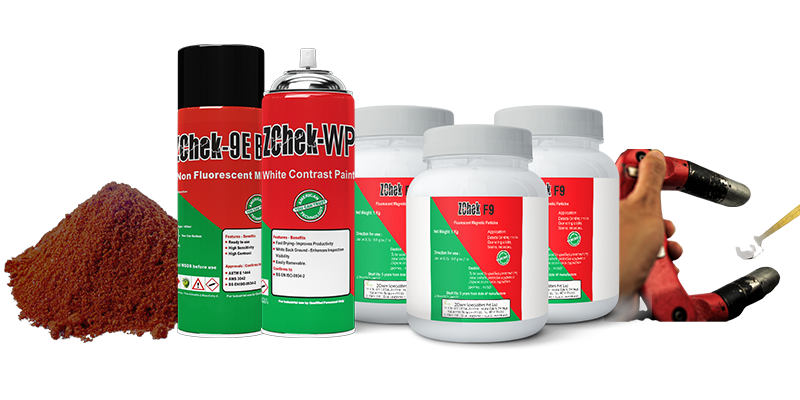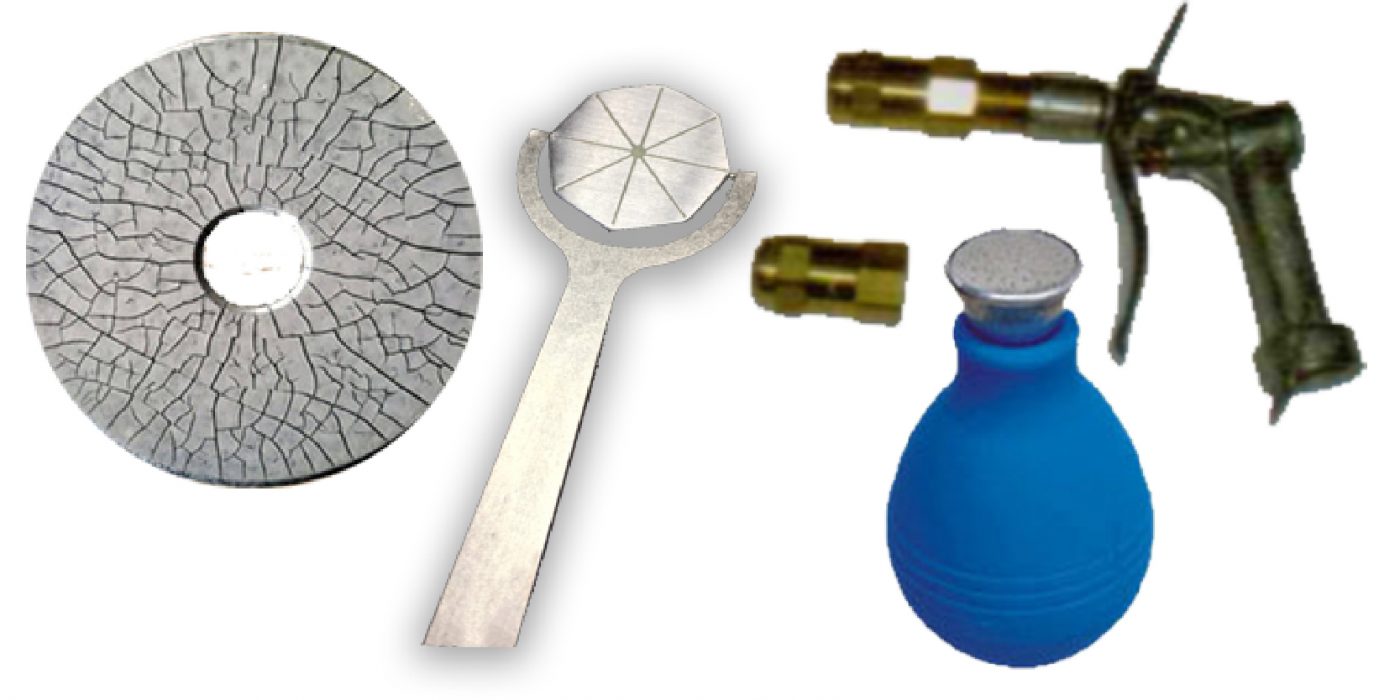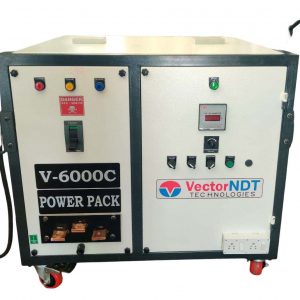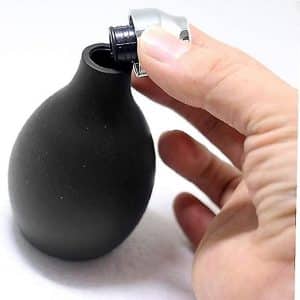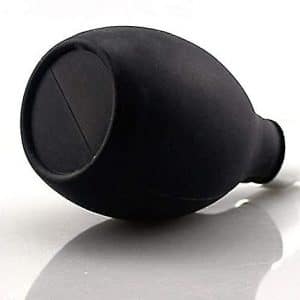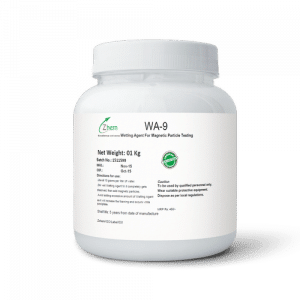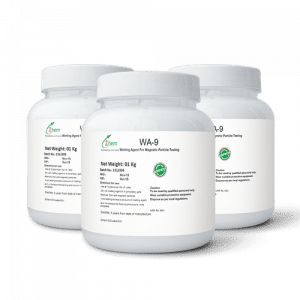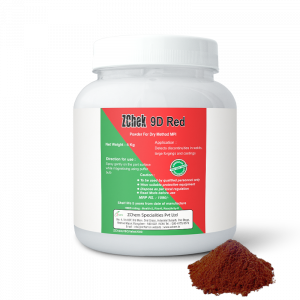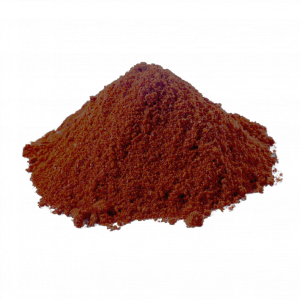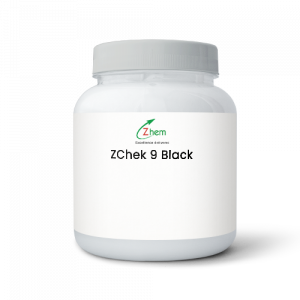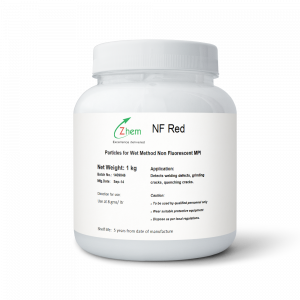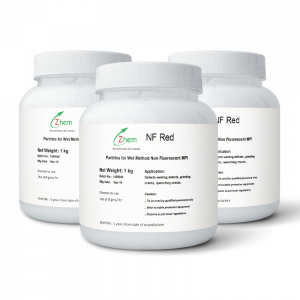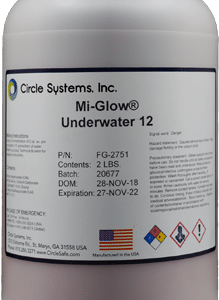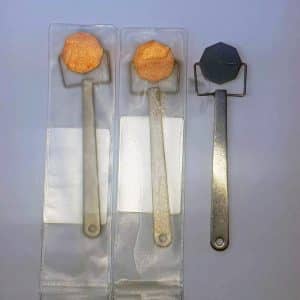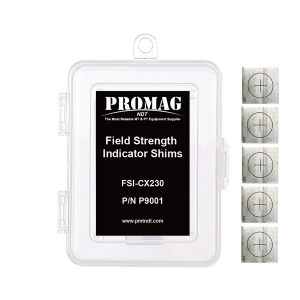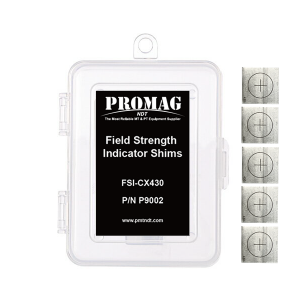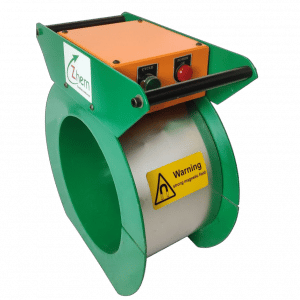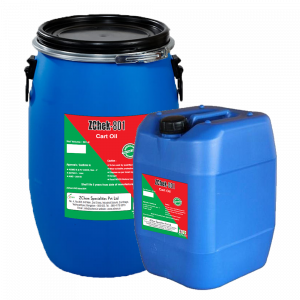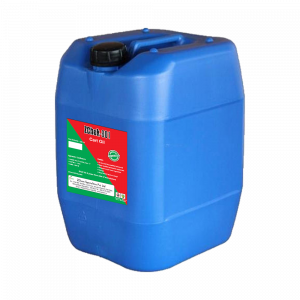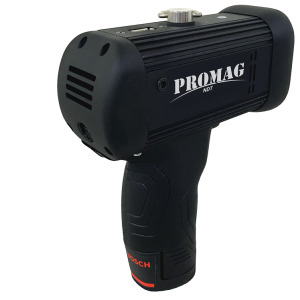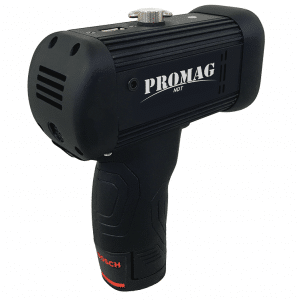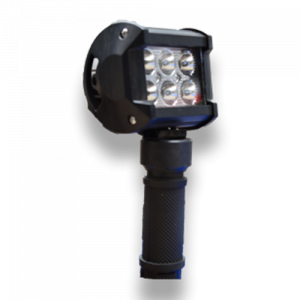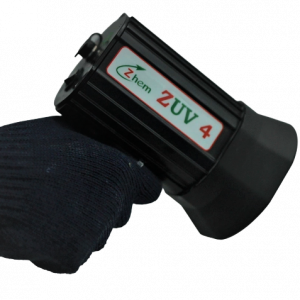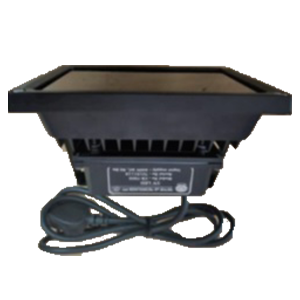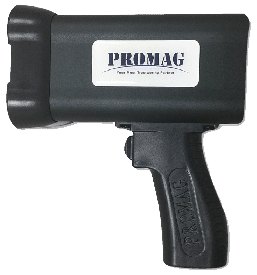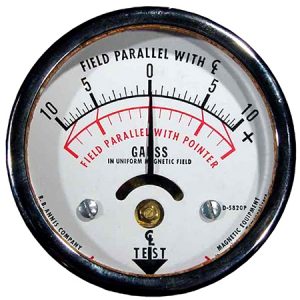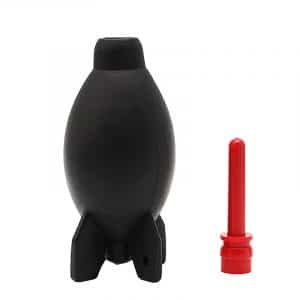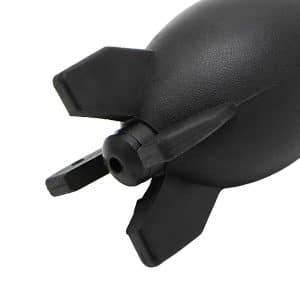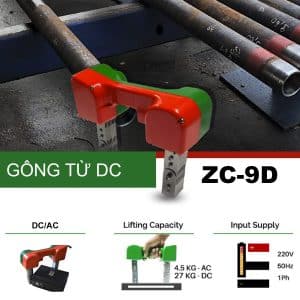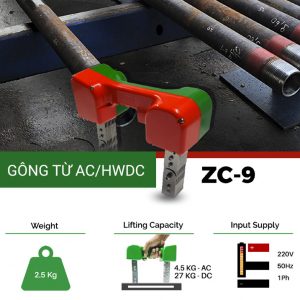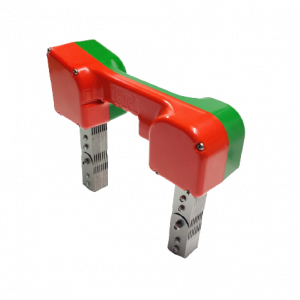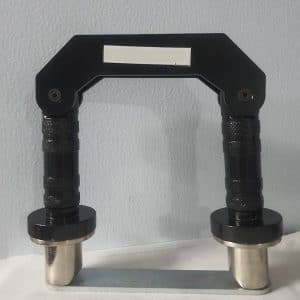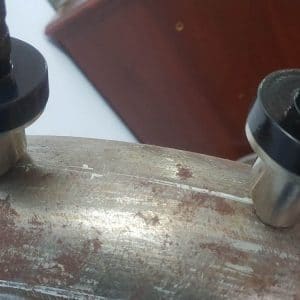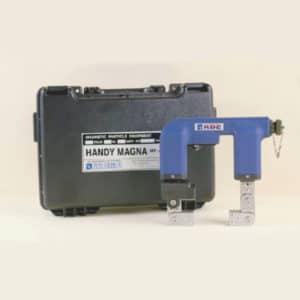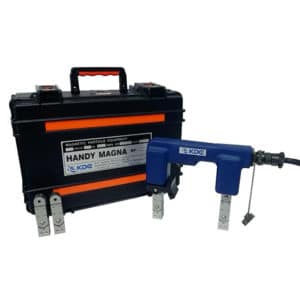Magnetic particle test overview
Magnetic Particle Inspection (MPI) or Magnetic Testing (MT) is an NDT method for testing the surface integrity of ferromagnetic materials. The test object is the object Is it ferromagnetic? magnetized by a magnetic field or magnet or a device like syllables. If on the sample there is a discontinuity on or near the surface, the discontinuity will interrupts the magnetic field path that flows through the sample and causes a leakage magnetic field to appear.
The iron particles are thoroughly ground and coated with dye, and then sprinkled or sprayed onto the test object. These particles are attracted towards the leakage fields and will gather to form an indicator just above the discontinuity. These signs can be detect by eye in good enough light or with fluorescent lighting if the method is fluorescence magnetic test. Necessary, white contrast paint applied to the material prior to testing.
For high sensitivity, a fluorescent magnetic solution and black light can be used, where a dark test environment is required.
Instant results
Magnetic particle testing is fast and relatively easy to apply, making it one of the most widely used non-destructive testing methods.
Surface and subsurface defects
Magnetic particle inspection is an ideal method to detect surface and subsurface defects in ferromagnetic materials.
Skip the paint
Magnetic particle inspection can detect discontinuities through thin non-conductive coatings (0.02 to 0.05 mm), saving time and costs.
Test method
Technical choice when deciding between fluorescence or visible magnetic particle testing.
Visible dyed magnetic beads
Ideal for locating large surface defects. Visual inspection can be performed indoors or outdoors with maneuvering equipment in white light.
Fluorescent magnetic beads
Suitable when it is necessary to identify very small discontinuities at the surface or just below the surface. Magnetic fluorescence testing should be performed in a dark room with a maximum white light intensity of 2 fc (22 lux) and performed under ultraviolet light.
The method of applying magnetic particles
Magnetic particles can be applied to the surface to be tested as a powder (dry method) or suspended in a liquid (wet method) such as an oil or water-based carrier.
Visible Magnetic Seeds (Dry)
This method is ideal for low to medium sensitivity testing and works on most ferrous surfaces. It is commonly used in field testing and use of magnetic cuffs when working with rough cast or forged parts. Necessary equipment includes:
- Dried Magnetic Seeds
- Magnetic pad or Power pack
Visible Magnetic Particles (Wet)
This method is ideal for highly sensitive testing on parts of different shapes and sizes. It is commonly used to detect shallow and small surface cracks in outdoor test environments. Required devices include:
- Black Magnetic Beads
- White Contrast Paint
- Magnetic pad or Power pack
Fluorescent Magnetic Beads (Wet)
This method is ideal for high-volume, high-sensitivity testing on parts of different sizes. Quickly and easily apply evenly onto parts using the nozzle. Required devices include:
- Ready-made magnetic powder or self-mixed magnetic powder
- Water or carrier oil
- Magnetic test station or Power pack
Consumable supplies
- Water- and oil-based fluorescent magnetic beads
- Non-fluorescent wet magnetic beads
- Non-fluorescent dry magnetic beads
- Magnetic seed carrier oil
- Conditioner and anti-rust agent
- Contrast paint
Advantages of MPI
- Quick inspection of large surfaces
- Relatively low equipment cost
- Detect surface and subsurface defects
- Immediately interpret visible indicators.
- Can be used in the workshop or in the field.
- Less surface preparation compared to Penetration Test (PT) method
Limitations of MPI
- Can only be used for ferromagnetic materials.
- Power supply required.
- Sometimes it is not clear whether the magnetic field is strong enough to get a good indication.
- Cannot be used if there is a thick layer of paint.
- Certain paints and granular suspension liquids can present a fire hazard, especially in confined spaces.
Frequently asked questions when testing magnetic beads
Magnetic particle test (MPI) is a method non-destructive testing Simple, cost-effective and reliable can be used to find surface and subsurface discontinuities in ferromagnetic materials such as iron (non-alloy and low-alloy steels, cast steel, cast iron) ), cobalt and nickel.
MPI . technique ARE NOT applicable on non-ferromagnetic materials such as high alloy steel (Austenitic), aluminum, copper, plastics, composites, etc.
To inspect a part using the MPI technique, that part needs to be magnetized first. If there is a discontinuity in the part, the magnetic field will propagate outward. This propagation is called flux leakage. Using a product containing fine iron particles, you can detect these areas of flux leakage.
A very simple way to determine if a part can be tested using the magnetic particle test is to use a permanent magnet to see if it is ferromagnetic. If correct, the magnet will 'stick' to the part and you can check it with MPI.
Only ferromagnetic materials can be tested using the MPI test. Materials with a major content of Iron or Cobalt or Nickel are called ferromagnetic materials.
VISCO offers visible and fluorescent magnetic particle inspection products.
Fluorescent MPI products contain pigments that fluoresce when exposed to ultraviolet (UV) radiation. Products for dry visible magnetic testing consist of colored particles that create contrast against the background. In addition, our black magnetic granule products can be easily observed on white background by coating the surface with white contrasting paint.
Fluorescent magnetic particle inspection products include:
- Fluorescent magnetic powder for wet method with water or oil base.
- Premixed oil-based fluorescent magnetic powder.
- Fluorescent magnetic powder mixed with water and additives.
Our Visible Magnetic Particle Inspection Products include:
- Dry powder.
- Pre-mixed oil-based black powder.
Products can be packaged in handy spray bottles, cans, cans and drums (depending on type).
The dry magnetic powder test is particularly suitable for testing on rough surfaces such as unpolished welds and rough castings. In addition to surface defects, dry powders can also be used to detect subsurface discontinuities.
With the dry magnetic powder method test, there is no carrier liquid in the process, so the dry powder can be used for testing on hot surfaces. However, in the absence of carrier fluid, the magnetic powder is less mobile.
VISCO offers a wide range of dry magnetic powders in different colors designed to create effective contrasts on different substrates. These powders can also be used over white contrasting paint.
When using dry powder, it is important to ensure that the surface is completely dry after cleaning. Dry powder is considered a disposable consumable and must not be reused because of the risk of contamination by dirt and moisture.
Wet magnetic particle testing involves applying magnetic particles to a part while the particles are suspended in the carrier fluid. The carrier can be oil or water.
The advantages of the wet test method are:
- Magnetic particles are easy to act evenly on the part to be tested;
- The magnetic particle mobility in the carrier fluid allows more time for the particles to find small flux leakage fields, making it possible to detect smaller discontinuities on smooth surfaces;
- Wet method MPI products are more sensitive when compared to dry powders;
- Wet MPI products are more suitable for the inspection of complex shapes.
When choosing between an oil- or water-based carrier, you need to consider:
- Surface wetting ability of the carrier;
- Safety and flammability aspects related to oil-based carrier solutions;
- Corrosion properties of water-based products.
Fluorescent MPI has better sensitivity than the visible magnetic powder method, but the cost of implementation and equipment requirements will be higher.
VISCO offers a wide range of oil-based and water-based inks for different uses.
| Product | Describe | Average grain size | Oil base | Water-based |
| ZChek F9W | ZChek F9W . water-phase fluorescent magnetic beads | 9-14 m | Pre-mixed ZChek WA9 | |
| ZChek F18W | High-sensitivity water-phase fluorescent magnetic beads ZChek F18W | 6-11 m | Pre-mixed ZChek WA9 | |
| ZChek F9 | Wet method fluorescent magnetic beads ZChek F9 | 9-14 m | ZChek Z801 . Bearing Oil | Mix with ZChek WA9 |
| ZChek F18 | High-sensitivity wet method fluorescent magnetic beads ZChek F18 | 6-11 m | ZChek Z801 . Bearing Oil | Mix with ZChek WA9 |
| ZChek 9 Black | Black dyed magnetic powder mixed with water or oil | < 20 m | ZChek Z801 . Bearing Oil | Mix with ZChek WA9 |
| ZChek NF Red | Red dyed magnetic powder mixed with water or oil | < 20 m | ZChek Z801 . Bearing Oil | Mix with ZChek WA9 |
| ZChek Facebook | Oil-based fluorescent magnetic ink | 6-11 m | Spray bottle | |
| ZChek 9E Black | Black dyed oil-based visible magnetic ink | < 20 m | Spray bottle |
Most fluorescent inks, pigmented visible magnetic powders, and high-sensitivity magnetic powders use different types of magnetic particles. Variants available for wet method magnetic particle inspection applications. The difference between oil-based and water-based can be summarized as follows:
| Advantages of oil-based magnetic test | Advantages of water-based magnetic test |
|
|
The magnetic particle inspection method detects surface and subsurface defects as large as 6-8mm. To find deeper defects, it is necessary to use high currents (large Amps) to create a deeper and stronger magnetic field.
The alternating current magnetic device helps to detect surface defects. DC current better detects subsurface defects. Read more about the magnetic particle test method overview to know detail.
The surface of the part under test shall be free of any form of contamination that could affect the test, for example grease, water, dirt and other agents that may have been coated on the surface during the test. production or pretreatment. Solvent-based cleaners and surface cleaners can be used such as ZChek-CL. The presence of coating on the surface - such as white contrast paint - will not affect the test as long as the coating thickness is less than 50 µm. Coatings thicker than 50 µm may reduce the sensitivity of the test.
The mobility of particles is greatly affected by the presence of foreign substances such as dirt, rust, grease, residue, oil and water. In addition, certain anti-corrosion products can also cause false indications.
The part to be tested will need to be thoroughly demagnetized prior to magnetization as part of the MPI process. If the part retains residual magnetism (for example, magnetism generated during welding), the test sensitivity may be reduced or false indications are produced.
Water-based magnetic powders mixed with conditioners contain low levels of corrosion inhibitors. This level should be sufficient to protect components during the magnetic particle check test.
Parts corrosion can occur both before and after inspection, so you need to make sure parts are kept clean and dry. After testing the use of water-based products, ensure that excess water is removed as quickly as possible to prevent the risk of corrosion.
If you need longer lasting corrosion protection, cover cleaned parts with a temporary protective layer.
There are many reasons why the magnetic particle solution tank can be contaminated. A typical example is the oil or protective coating on the part that escapes into the solution in the bath. Over time, this degreasing effect can lead to a build-up of 'sludge' or deposits. This build-up is less likely when using an oil-based product because it is able to naturally dissolve this contaminant.
As a fix, we recommend pre-cleaning the parts using detergent and solvent-based cleaning prior to testing.
There are a number of reasons for the decline in the content of particles during magnetic particle testing, including:
- Particles are stuck to the part during inspection. In addition to the particles concentrated around the discontinuity, the particles also adhere to the surface of the part due to its surface roughness and geometrical shape.
- Overvalued magnetization, which usually occurs when a component has different thicknesses or diameters.
- Particles 'stuck' in parts of process equipment, such as pipes, filters, pumps, etc. In some cases when you first fill the tank and when re-inspection it is still necessary to replenish it. Add magnetic beads to achieve the right level.
- Dirt on details. For example, dirt in the form of oil and grease can cause particles to adhere to the part as it is removed from the bath.
Oil-based liquids such as Z801 not volatile under normal operating conditions. However, with water-based products, a low level of evaporation can be seen due to water loss and not additives such as wetting agents, corrosion inhibitors. Therefore, if it is necessary to add more water to the tub, only water should be added as the addition of additives can cause an imbalance of the solution in the tub.
The presence of coating on the surface - such as white contrast paint - will not affect the test as long as the coating thickness is less than 50 µm. Coatings thicker than 50 µm may reduce the sensitivity of the test. Pay attention to apply the contrast paint carefully and evenly.
If you need to remove white contrast paint from the part being inspected, use a wire brush or a common solvent such as acetone.
Both oil-based and water-based magnetic particle solutions have a maximum recommended use temperature of about 48°C because the particles are less stable at higher temperatures.
Along with that, it is necessary to pay attention to the flash point when using carrier oil (the lowest temperature at which a liquid can form a flammable mixture in air). According to AMS specifications, the flash point of the carrier oil should exceed 93°C. When conducting MPI, it is best to ensure that the temperature used is consistent with the above recommendations.
Under the new US and Canadian regulations, GHS, SDS no longer have an expiration date. Instead, the SDS is updated within 3 months of any new information. Therefore, MSDS found on our website is the latest update.
Magnetic beads (MT, MPI)
Magnetic beads (MT, MPI)
Magnetic beads (MT, MPI)
Multi-function air conditioner powder mixed with water ZChek WA-9
Magnetic beads (MT, MPI)
Magnetic beads (MT, MPI)
Magnetic beads (MT, MPI)
Magnetic beads (MT, MPI)
Magnetic beads (MT, MPI)
Magnetic beads (MT, MPI)
Chỉ thị chất lượng định lượng FSI cho kiểm tra từ tính (thay thế QQI)
Magnetic coil
Magnetic beads (MT, MPI)
Magnetic beads (MT, MPI)
Magnetic beads (MT, MPI)
Magnetic beads (MT, MPI)
Magnetic beads (MT, MPI)
Magnetic beads (MT, MPI)
Magnetic beads (MT, MPI)
Magnetic beads (MT, MPI)
Magnetic beads (MT, MPI)
Magnetic Yokes
Magnetic Yokes
Magnetic Yokes
Magnetic Yokes
Magnetic Yokes
Kiem tra tu tinh, Magnetic testing, Magnetic inspection, bột từ huỳnh quang, hóa chất phản quang, hóa chất kiểm tra từ tính, dầu carrier, dầu mang, bột từ pha sẵn, từ tính, kiểm tra từ tính, hệ thống kiểm tra vết nứt bằng từ tính, máy thử nứt từ tính, kiểm tra bằng bột từ, MPI, kiểm tra từ tính
